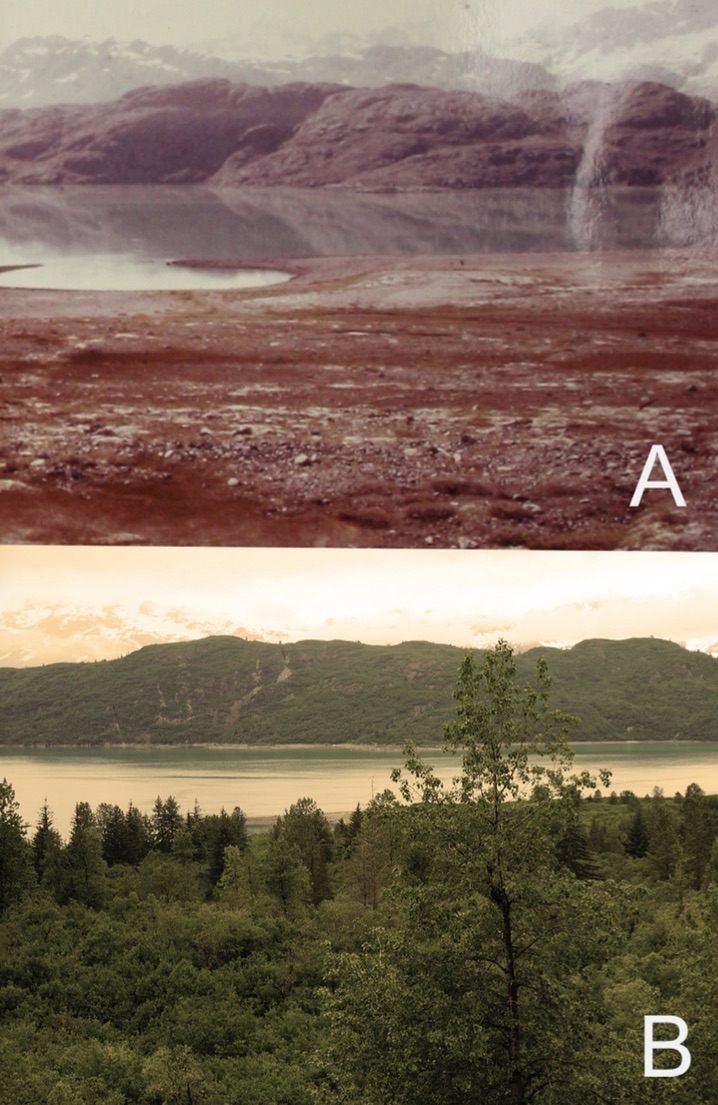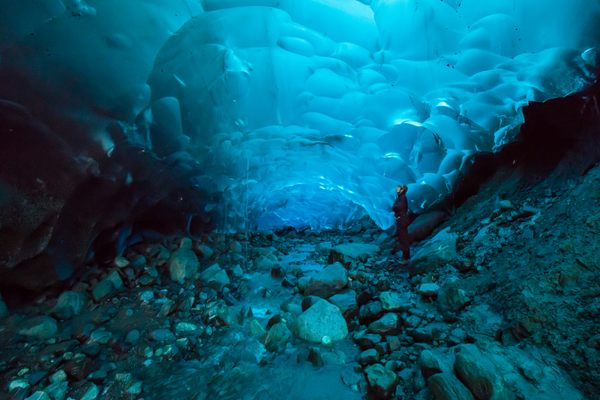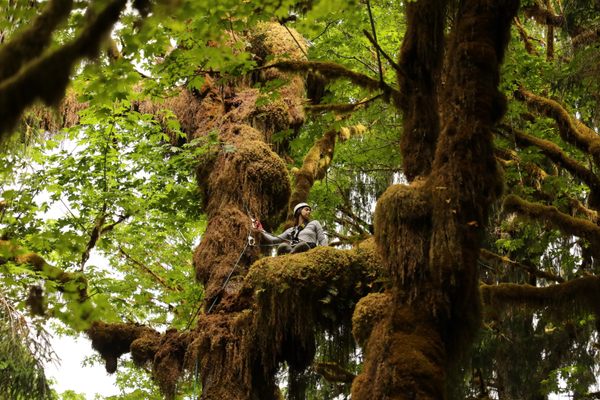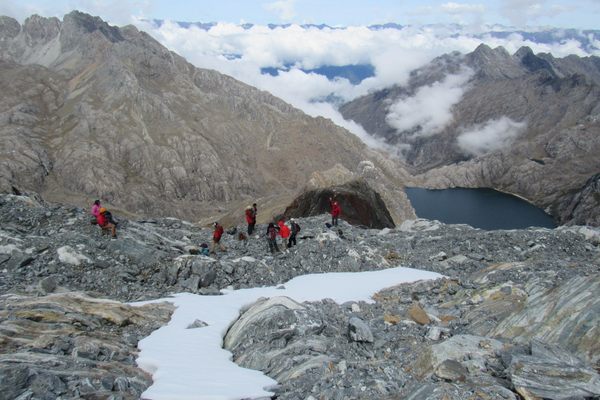Found: The Forgotten Metal Markers of a 100-Year-Old Ecology Study
Eight plots in Alaska are now the longest-running study of plant succession in the world.

In 1916, William S. Cooper, who Alaska Public Radio calls a “godfather of modern ecology,” set up study plots in Glacier Bay, Alaska. Cooper had been inspired to come to this spot by reports from the famous naturalist John Muir, who visited in the late 19th century, and wrote that the glacial ice found there by 18th-century European travelers had retreated. As the glacier disappeared, the land had been left bare.
This condition fascinated Cooper, who studied plant succession—the development of plant communities over time. Places covered in plants don’t stay the same; new plants move in, and once-dominant plants can disappear. For Cooper, Glacier Bay represented a unique opportunity to study the change in plant communities over decades, as they moved into this newly available neighborhood.
For decades, Cooper and his successors studied these same plots, monitoring, measuring, and recording the ecological conditions as the bare rock was colonized by herbaceous plants, which gave way to mossy, mat-forming plants. But after the death of Donald B. Lawrence, the Cooper student who had taken over the study, the locations of the plots were lost.

Last year, though, 100 years after Cooper first started his study, researchers from the University of Alaska Southeast led a project to rediscover those plots. Brian Buma, an ecology professor who studies forest disturbance and climate change, went to University of Minnesota, where Cooper’s notebooks are archived, to unearth clues to the plots’ locations. Cooper left behind “exhaustive notes, photographs and sketches,” APR reports, but even so it was difficult for Buma and his colleagues to find what they were looking for.
Sometimes Cooper measured distances in paces; in all cases, the once-bare plots had been overgrown with shrubby trees. The plots had been marked with iron rods, centered in cairns, but the scientists still needed a metal detector to find those rods and be sure they were in the right place.
Over a couple of weeks, though, they were able to locate Cooper’s eight original plots and continue the research that he started 100 years ago, to understanding how plants develop and redevelop a newly available stretch of land.
Cooper predicted that “the value of this study … will only increase with time,” and he has been proven correct. There are few opportunities for scientists to study plant succession in real time, and these plots—thanks in part to Cooper’s work lobbying to make this place a National Monument—have stayed almost entirely free of human interference for the past century. Now, as far as the researchers know, their update to Cooper’s work makes the study “the longest-running primary succession plot network in the world.”























Follow us on Twitter to get the latest on the world's hidden wonders.
Like us on Facebook to get the latest on the world's hidden wonders.
Follow us on Twitter Like us on Facebook